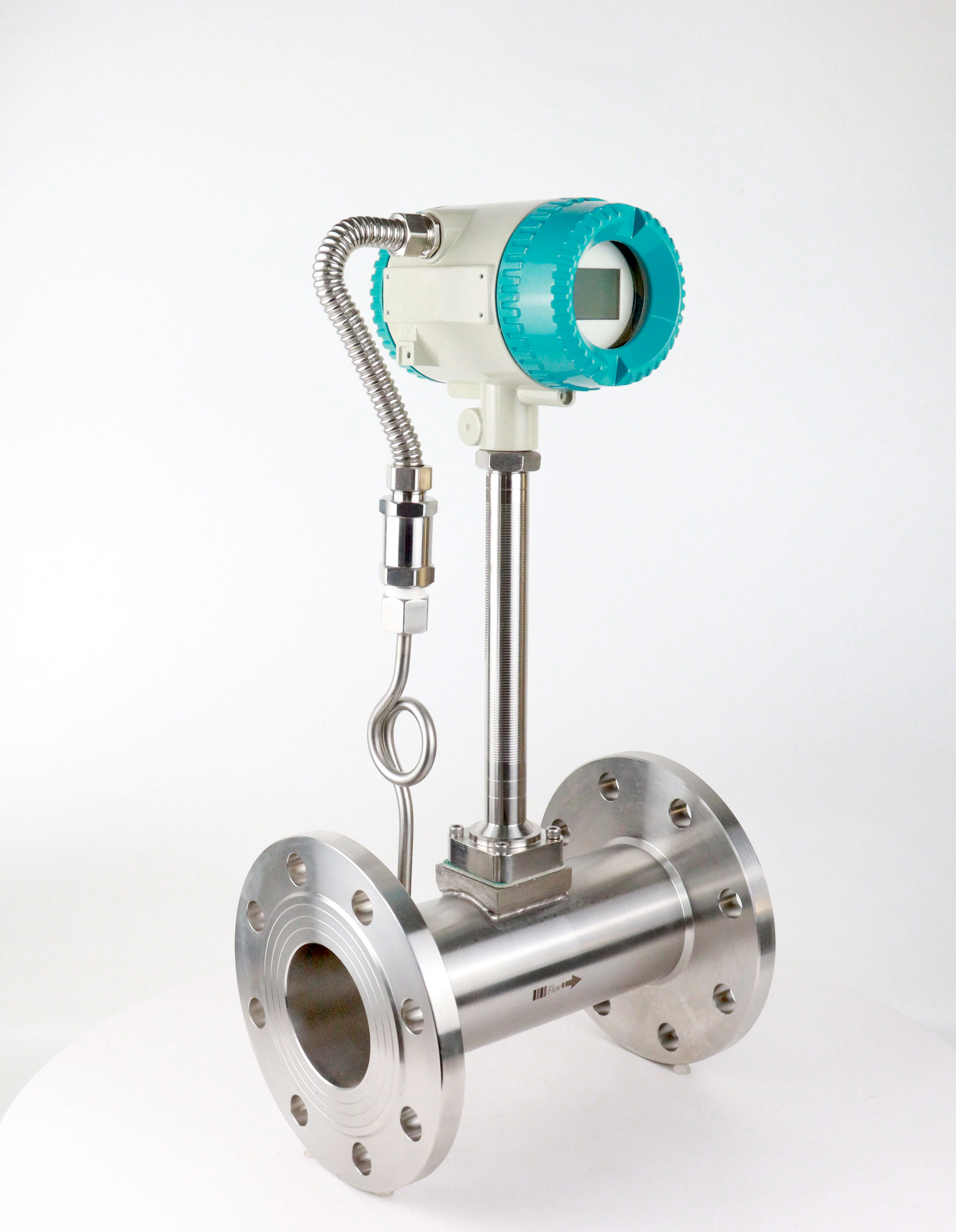
Vortex flowmeter is sensitive to the distortion of pipeline velocity distribution, rotating flow and flow pulsation. Therefore, pay full attention to the installation conditions of on-site pipeline and strictly follow the operation manual.
Vortex flowmeter can be installed indoors or outdoors. If it is installed in the ground well, salivary water sensor shall be selected in order to prevent flooding. The sensor can be installed horizontally, vertically or obliquely on the pipeline, but the installation position should be paid attention to in order to prevent the interference of bubbles and droplets when measuring liquid and gas.
The vortex flowmeter must ensure that the upstream and downstream straight pipe sections have the necessary length.
① The inner diameter D of upstream and downstream piping is the same as that of sensor, and the difference meets the following conditions: 0.95d ≤ D ′≤ 1.1d.
② The piping shall be concentric with the sensor, and the coaxiality shall be less than 0.05d '.
③ The sealing gasket shall not protrude into the pipe, and its inner diameter can be 1 ~ 2mm larger than the inner diameter of the sensor.
④ If it is necessary to cut off the flow to check or clean the sensor, a bypass pipe shall be set.
⑤ Reducing the influence of vibration on vortex flowmeter during field installation is worthy of attention. Avoid the vibration source as far as possible, use elastic hose to connect in small diameter, and install pipe support.
1. The vortex flowmeter can only measure in one direction. During installation, pay attention to ensure that the medium flow direction is consistent with the direction indicated by the arrow of the flowmeter. ?
2. The vortex flowmeter is installed vertically, and the medium passes through the flowmeter from bottom to top. The flowmeter is installed on the vertical pipe, and the flow direction is from bottom to top. ?
3. During horizontal installation, the flowmeter must be installed in the high-pressure area of the whole system and ensure the corresponding outlet pressure; Do not install it at the high point of the pipeline, because the high point often accumulates gas, the pipeline is not full, and the outlet cannot be vented directly. ?
4. When measuring high-temperature fluid, try to use vertical installation; If it has to be installed horizontally, please install the transmitter part of the flowmeter vertically downward or horizontally on the side to avoid excessive temperature; Pay attention to good air flow or ventilation at the installation position. ?
5. Requirements for straight pipe section: at least 15 times the pipe diameter before the flowmeter and 5 times the pipe diameter after the flowmeter. If there are elbow, retraction, expansion and other interference sources in front of the flowmeter, it is necessary to ensure 30-40 times of the pipe diameter in front of the flowmeter and 6 times of the pipe diameter behind the flowmeter. The flowmeter shall be installed upstream of the regulating valve, pressure or temperature sensor. ?
6. During installation, pay attention that the pipe diameter should be slightly greater than or equal to the inner diameter of the instrument. ?
7. When using the sealing ring, note that the inner diameter of the sealing ring should be slightly greater than or equal to the inner diameter of the instrument, and the center of the sealing ring is located in the center of the pipe. ?
When the instrument is electrically connected, attention must be paid to the sealing of the inlet hole. The corresponding sealing interface (M20) must be selected according to the model of instrument cable inlet Χ 1.5; 1/2”NPT; G1 / 2 ") and installed correctly and tightly. One of the most common causes of instrument damage is that no sealing joint or careless installation can not achieve the sealing effect.




